|
The Medicare Access and CHIP Reauthorization Act of 2015 (MACRA) which authorized and required the Merit-Based Incentive Payment System MIPS) resulted in CMS producing the Annual Quality and Resource Use Report (QRUR) for each Taxpayer Identification Number receiving Medicare Fee-for-Service funds. In addition to the REI report done on SETMA in 2011, SETMA has received two QRURs: the report for the first half of 2015 is at link one below; the report for the full year 2015 is in the second link below (the report from 2011 is also on our website):
- CMS Quality Resource and Utilization Report (QRUR) data for 2015 for SETMA
- CMS Quality Resource and Utilization Report (QRUR) data for 2015 for SETMA - Final
SETMA has completed an analysis of these reports and has designed tools for improving our cost and quality. Some of that analysis can be reviewed at: SETMA's Prescient Preparation for MACRA and MIPS September 2016. This shows that SETMA has prepared well for this time with:
- NCQA recognition as a Tier 3 Patient-Centered Medical Home from 2010-2019 which meets the MIPS Clinical Practice Improvement Activities requirement of MIPS.
- A twenty-one-year use of a certified EMR meeting Meaningful Use standards and now the MIPS Advancing Care Information Systems (MACRA MIPS Where Does SETMA Stand).
- Pursuing quality standards by the development of a Model of Care which includes tracking, auditing, analyzing statistically, public reporting by provider name of quality performance and the designing of quality improvement with this data. (see SETMA’s Model of Care Patient-Centered Medical Home: The Future of Healthcare Innovation and Change). From this came SETMA’s participation in PQRI (2007) and PQRS (2011) and now MIPS.
- Being attentive to the cost of the care we deliver to all patients but particularly to Medicare Advantage beneficiaries and Medicare Fee-for-Service patients and Medicaid patients.
As we use the Final 2015 date from the QRUR to design solutions to improved quality, SETMA has deployed the following MACRA/MIPS Quality Measure template. This templates identifies the metrics, gives their descriptions, identifies to whom they apply and shows you how to easily and efficiently meet each of them. If we all follow this easy tool, our MIPS quality performance with improve dramatically.
Because MIPS will be so important to our practice going forward, the tool for the MIPS quality measures will appear in three places in the EMR, allowing you the convenience at performing these functions in your own workflow:
- AAA Home
- Master GP
- The Plan Template
The link will appear red if you have not been to it on the current encounter, or if you went to it, and left something undone which the tool indicates needs to be done. The following are templates which show you were the MIPS Quality Measures appear on each of these templates:
AAA Home
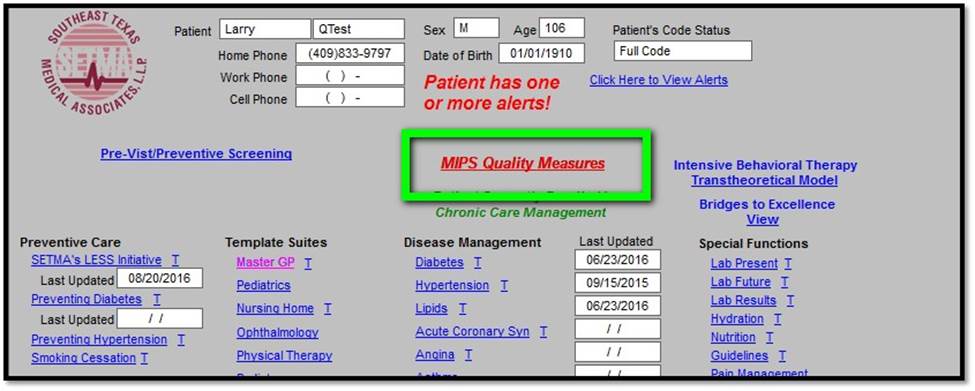
Master GP
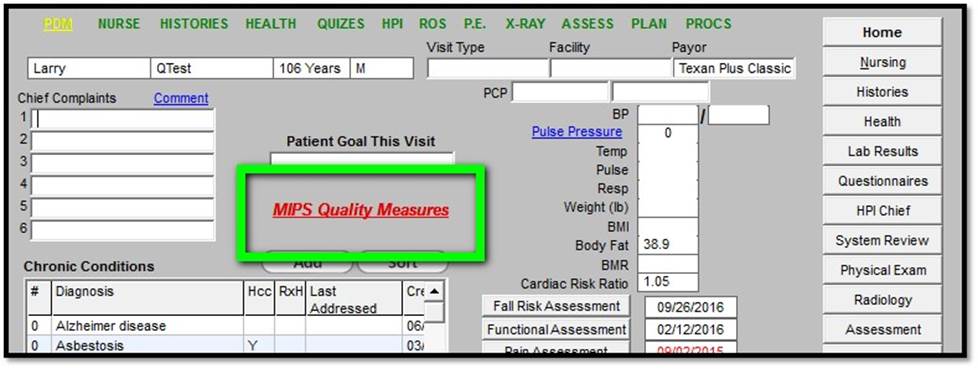
Plan
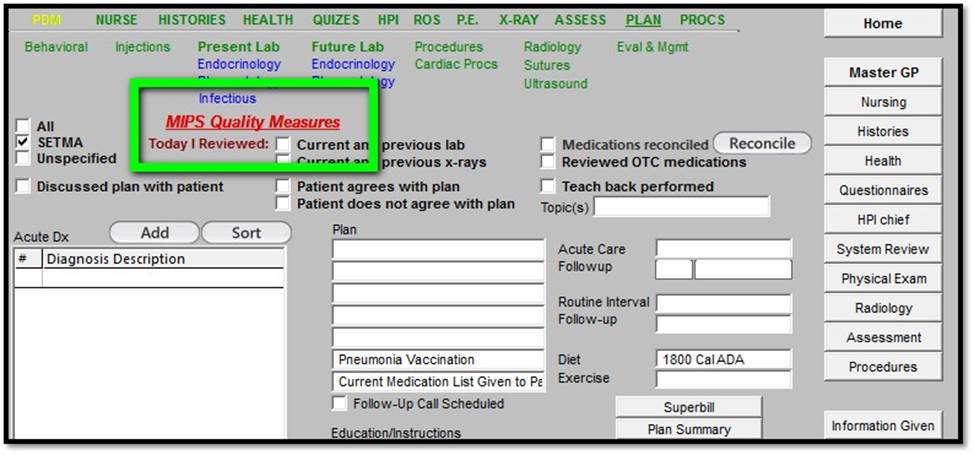
The measures we are using for MIPS are listed on the following template. In order to meet the measure which the MIPS tool indicates is not done, you simple click the button to the left of the measures name, number and description:
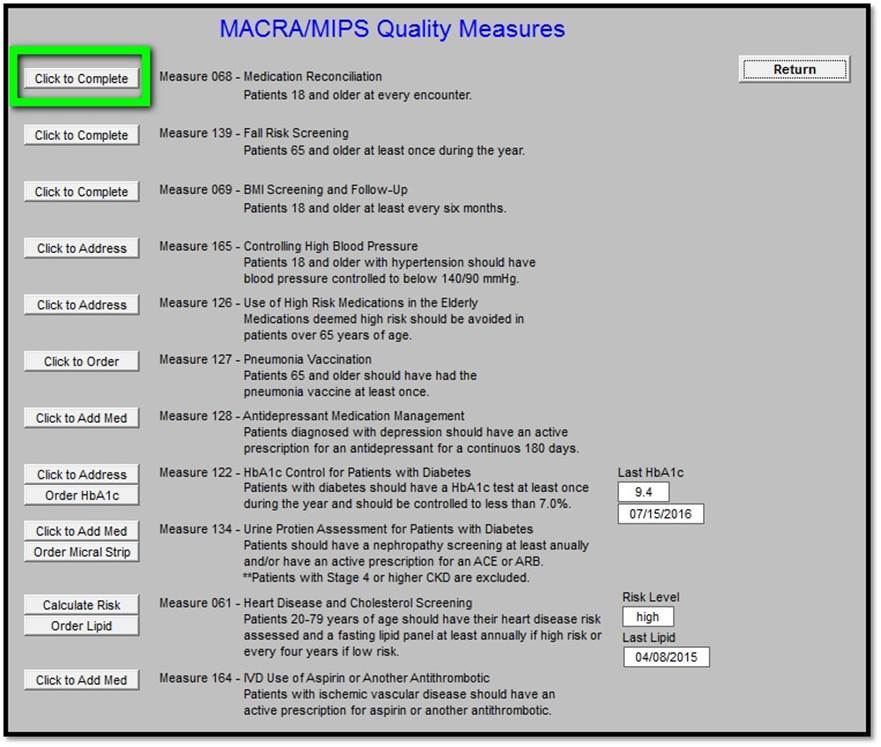
Click the button opens the template which allows you to complete a medication reconciliation. Use the Save & Close button to return.
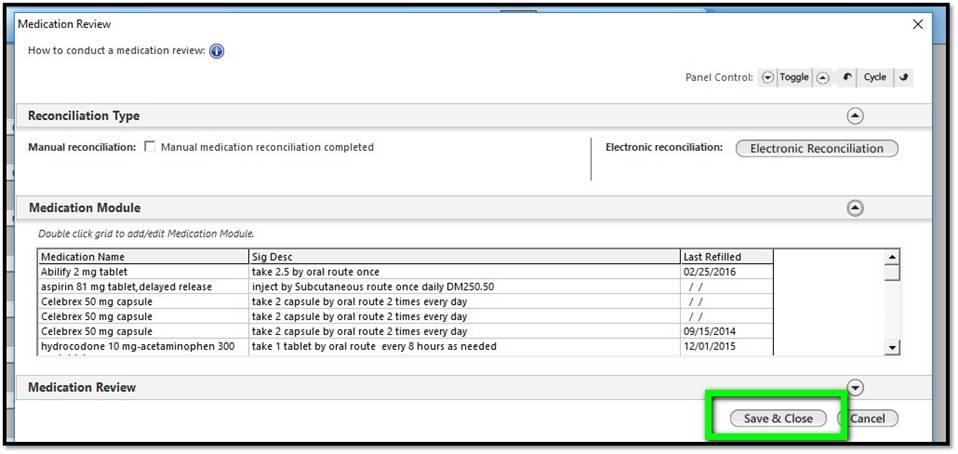
Fall Risk -- All of SETMA’s providers and nurses are familiar with SETMA’s Fall Risk Questionnaire. It is an important issue with the elderly or disabled. Be sure that as you measure the patient’s risk that if they are at increased risk you address issue of safety with the patient or the patient’s family.
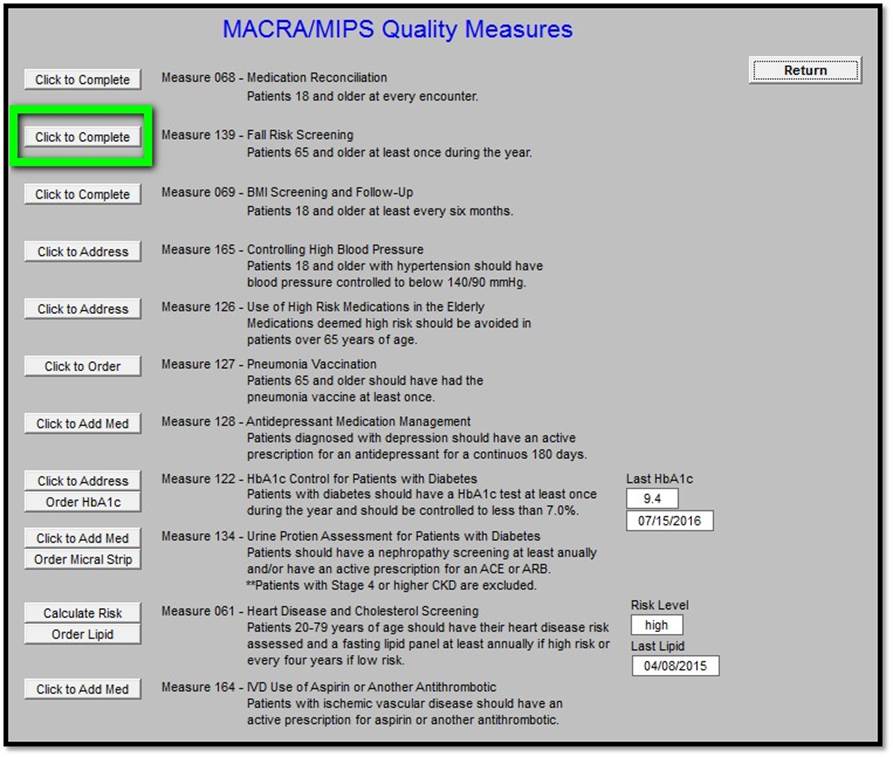
Clicking the button opens the template to complete a fall risk assessment. Use the Return button to go back when finished.
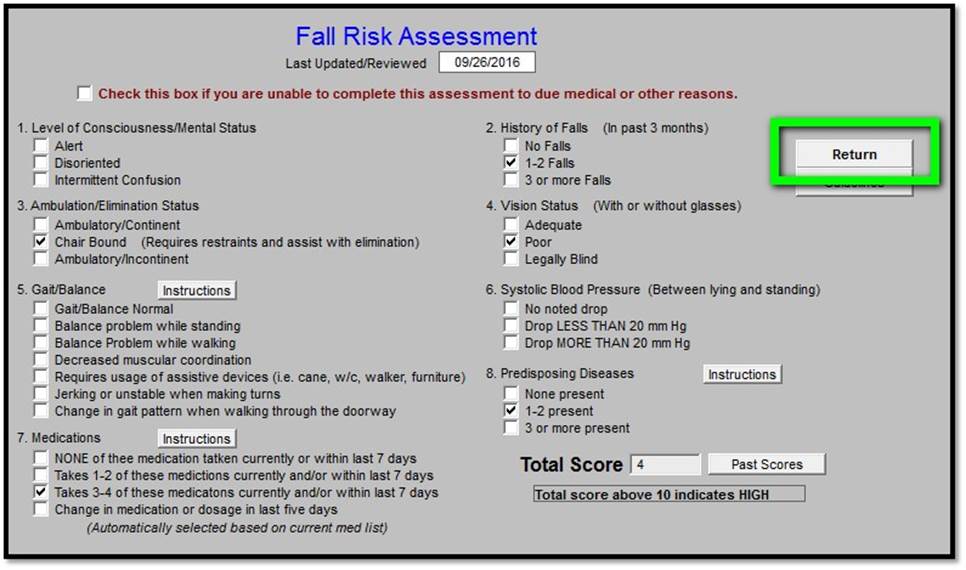
BMI is an important measurement in a patient’s care. Because we do it so automatically, we need to remind ourselves of how high BMIs - above 30 - increase patient risk for dementia, cancer, metabolic syndrome, diabetes and a host of other disorders. In addition to measuring the BMI, we must be taking steps along with SETMA LESS Initiative tool to encourage patients to moderate their eating, to increase their exercise and to lose weight.

Opens the LESS Initiative template to complete BMI assessment and follow-up. Use the Return button to go back when finished.
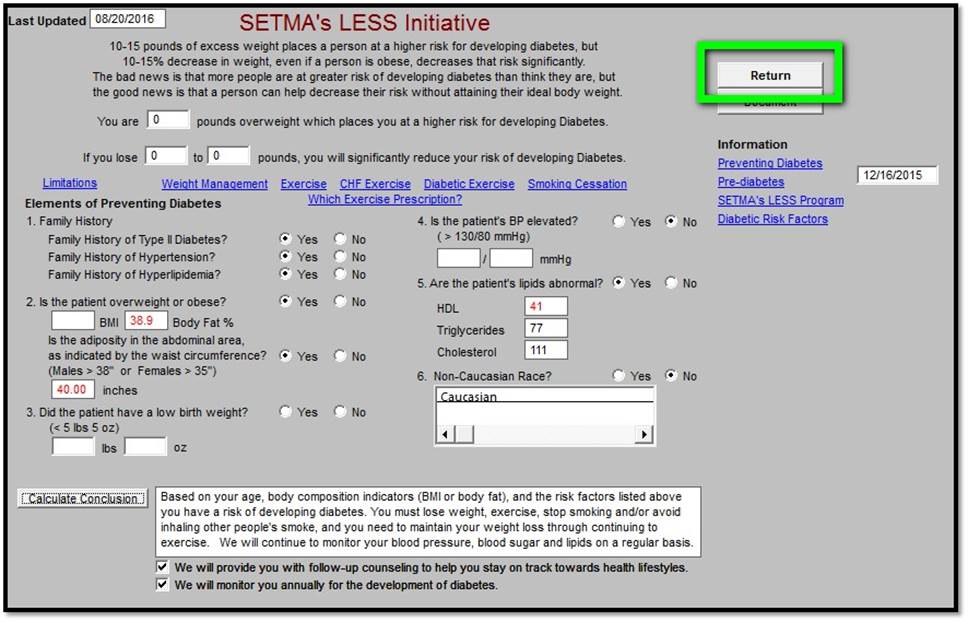
Blood Pressure -- The single most important metric in healthcare is for patients to control their blood pressure; even for patients with diabetes, controlling the blood pressure is more important even than controlling the blood sugar.
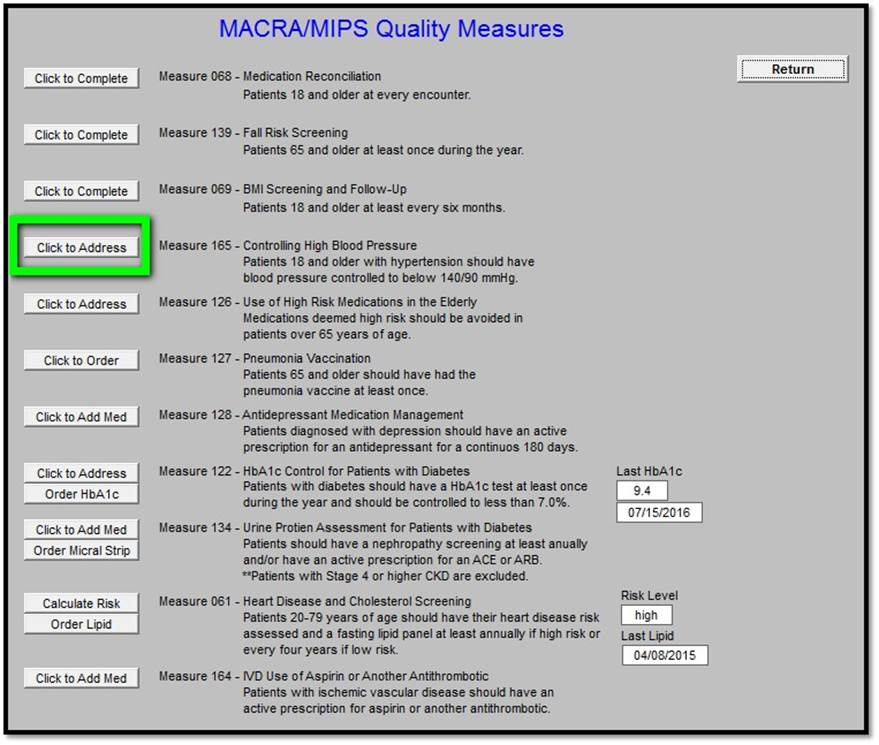
Opens the hypertension suite of templates to address elevated blood pressure. Use the Return button to go back when finished.
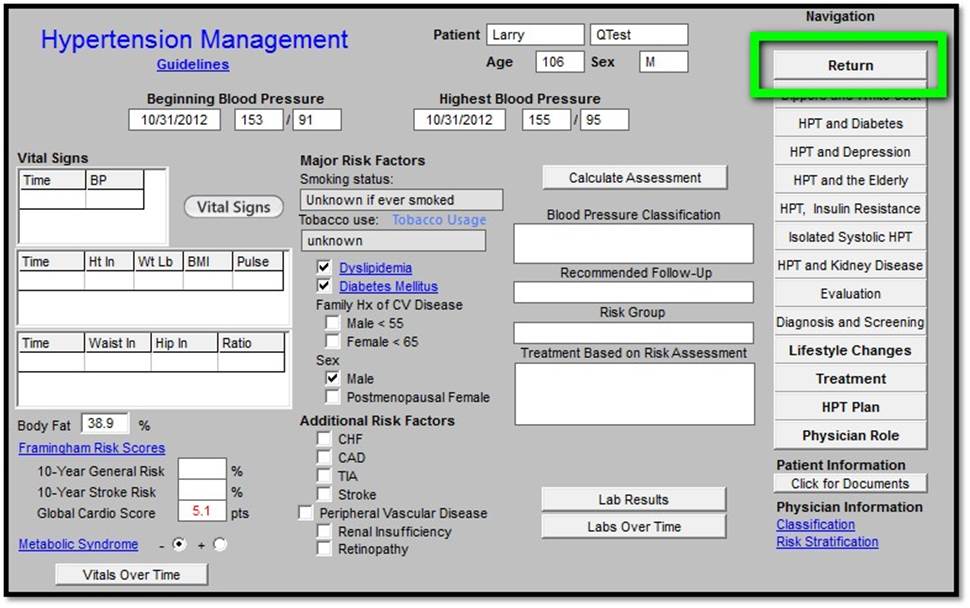
High Risk Medications - Whether in the Medicare Advantage Stars Program, MIPS, HEDIS or other quality metric standards the decreasing use of potentially high risk medications in those over 65 is important. Please remember, going forward with MIPS, even if the patient begins the year on one or more of these medications, if you do not renew that medication in the reporting year, you meet this metric standard.
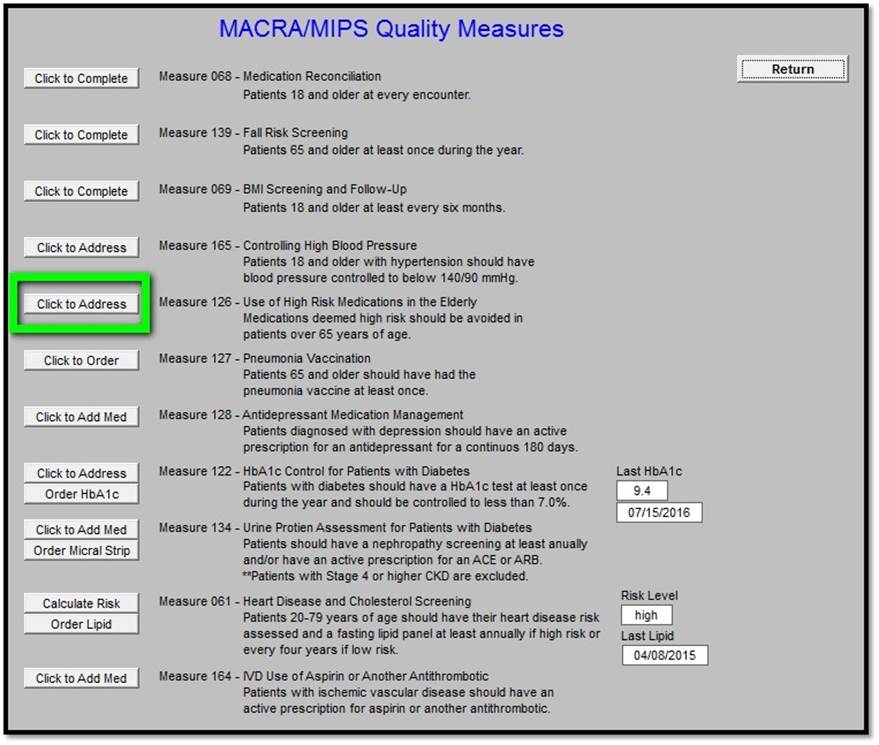
Opens the follow pop-up which will list any active medications for the current patient which are deemed high risk. You must enter a response next to each medication. If you click the “Click to Stop” button, it will automatically stop that medication in the patient’s chart. Click OK when done.

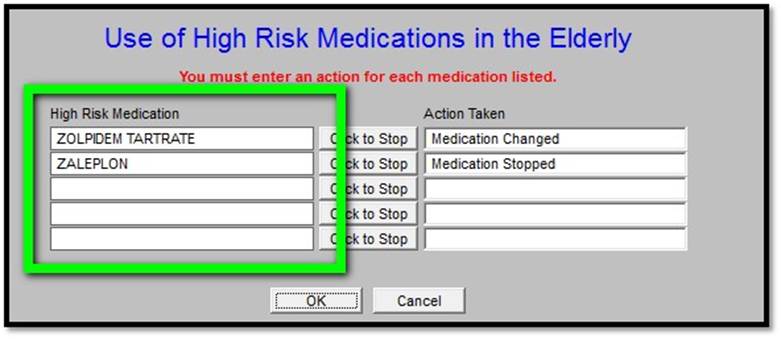
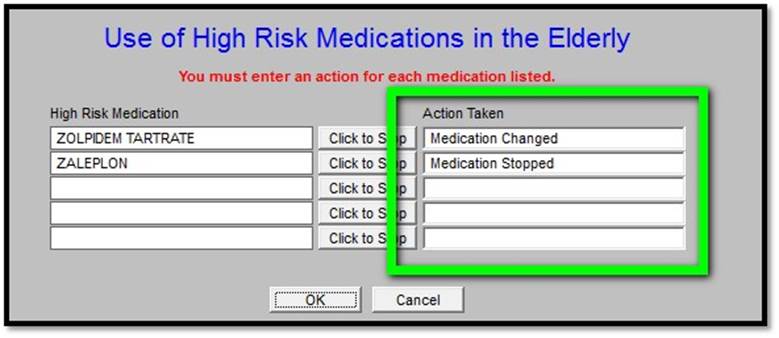
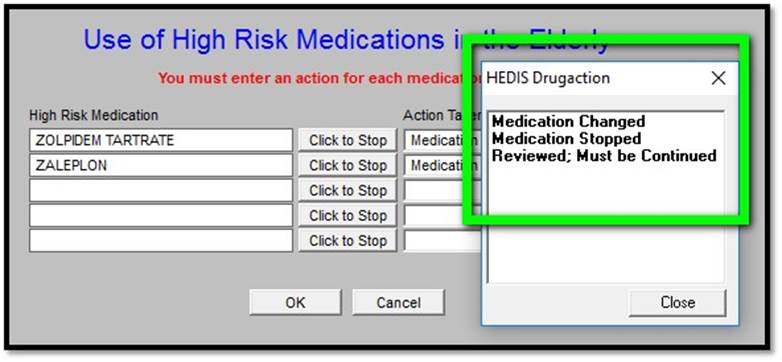
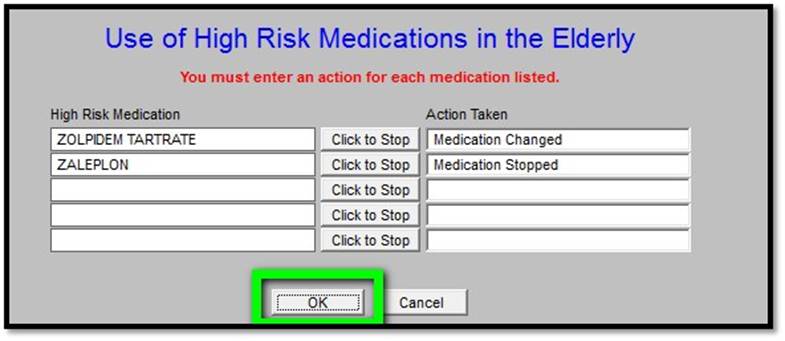
Pneumonia Vaccine - the Automated Team and the SETMA Health Maintenance will already alert you to the fact that your patient needs a pneumonia immunization but this redundant opportunity makes sure that ALL of SETMA’s patients get this important preventive medicine service.
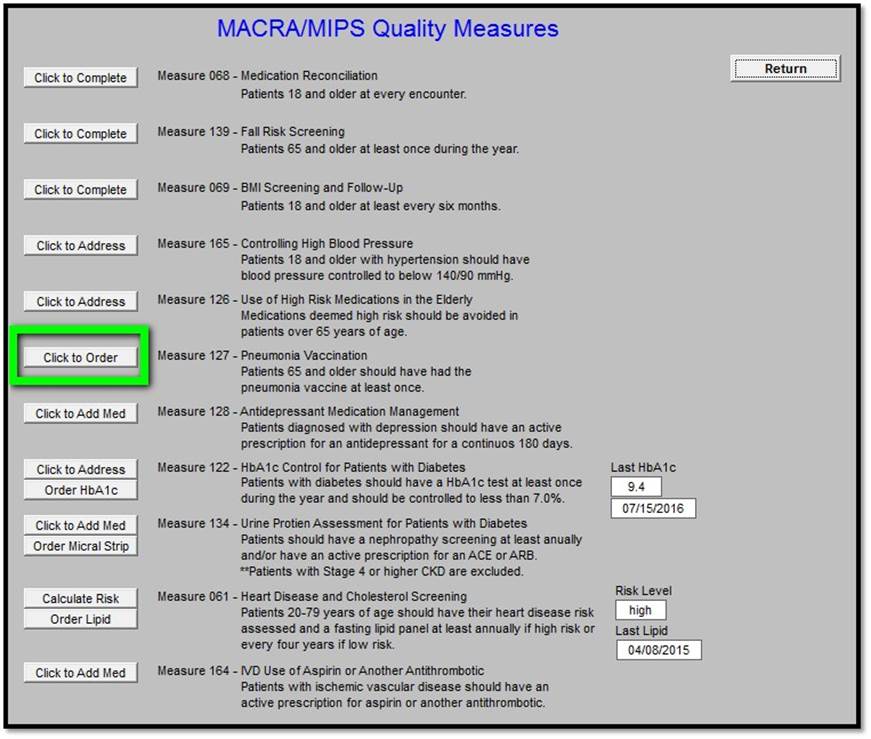
Makes notation of vaccination order on Plan section of chart.

Anti-Depressant Medication - If a patient is diagnoses with depression, they should have an active medication prescription or at least the next 180 days (six months). This tool will alert you if your patient does not have such a prescription.
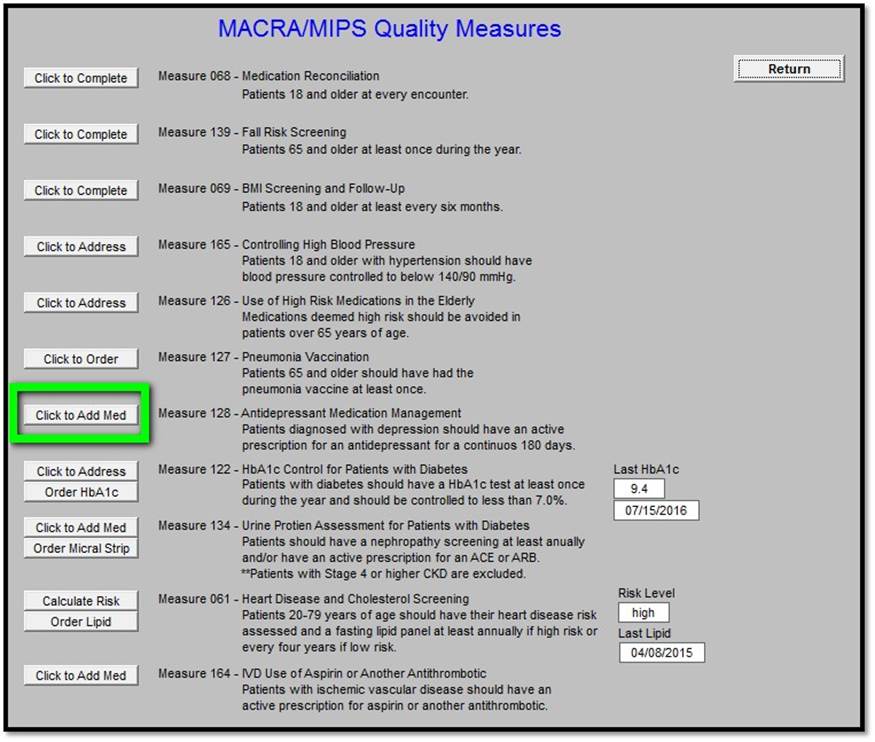
Automatically opens medication module to add or edit medications related to depression. Click Close when done to return.
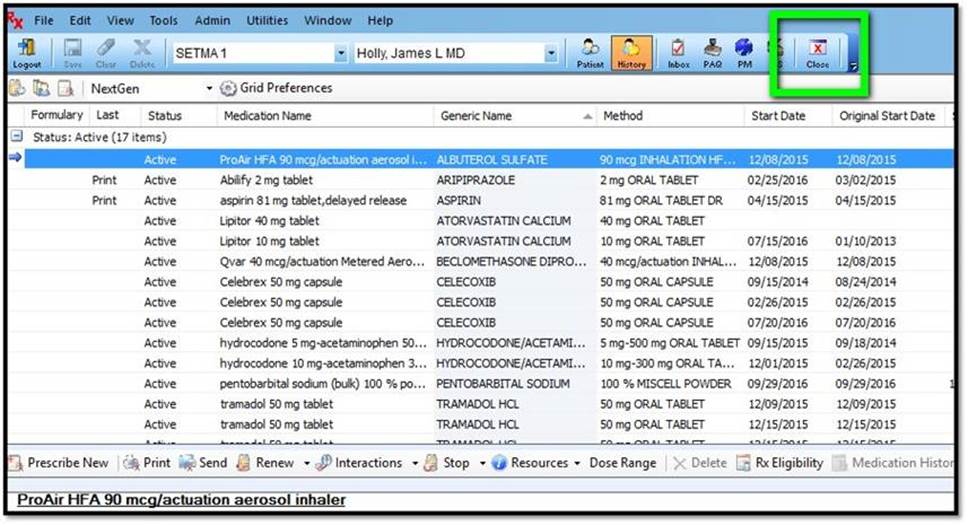
Hgb A1c - the MIPS measure requires that a patient with diabetes have at least one HgbA1c annually. If the value is 7.0% or less, that is all that is needed. If the value is above 7.0%, you need to see the patient again after a change in medication or treatment recommendations and repeat the A1c.

The above button opens the Diabetes suite of templates to address elevated HbA1c control. Use the Return button to go back when finished.
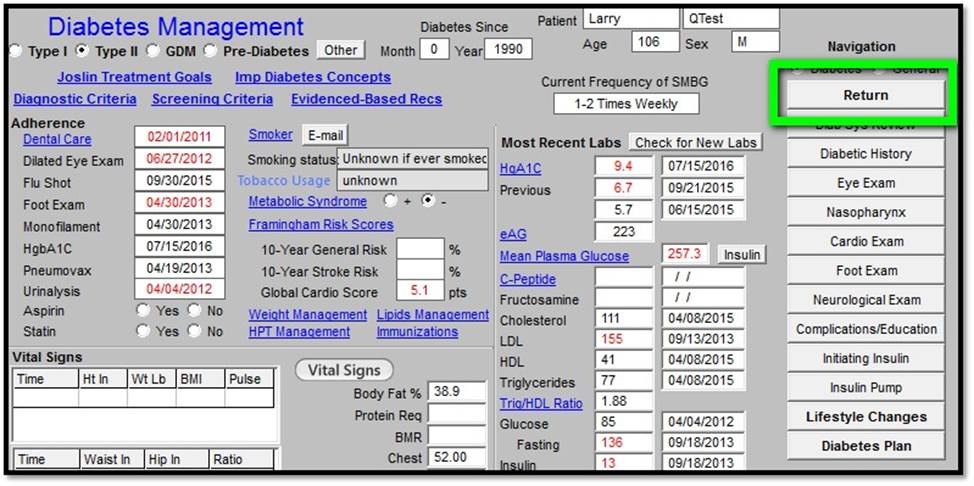
“Order HbA1c” automatically creates a lab order for a Glycohemoglobin from the main template. The patient’s Diabetes diagnosis code is automatically associated with the test. No other steps are required other than sending the patient to the lab.
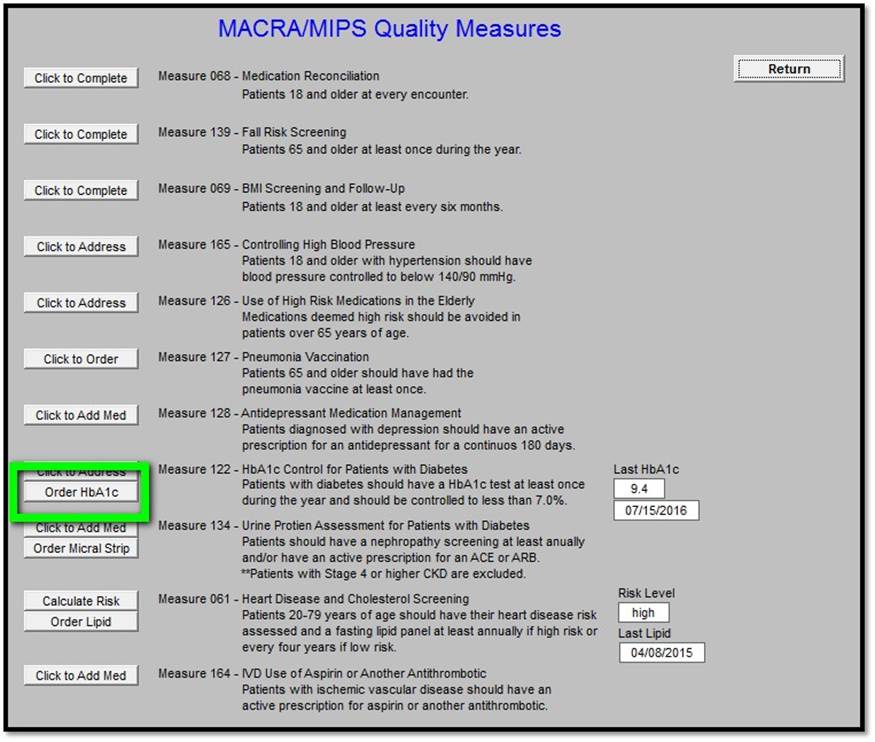
The Nephrology metric has two parts for patients with diabetes - one is that the patient is on an ACE or ARB and the other is that they have a urine sample for albuminuria annually.
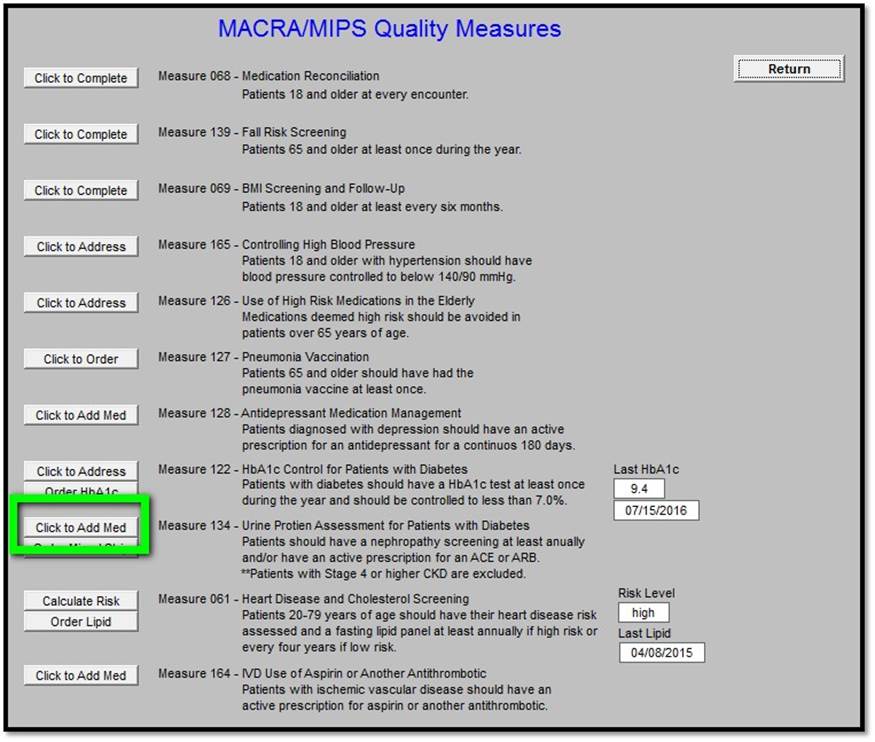
Automatically opens medication module to add or edit medications related to nephropathy. Click Close when done to return.
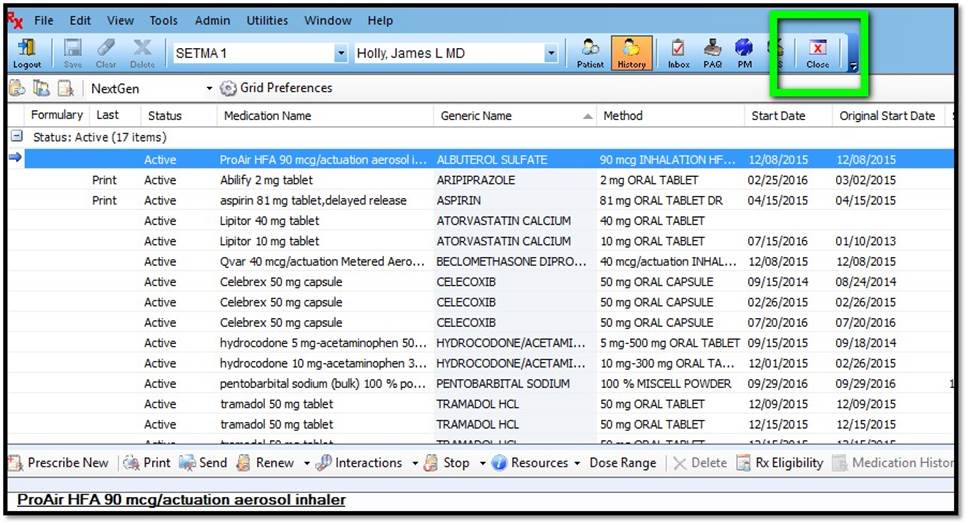
“Order Micral Strip” automatically creates a lab order for a Micral Strip from the main template. The patient’s Diabetes diagnosis code is automatically associated with the test. No other steps are required other than sending the patient to the lab.

Heart Risk and Cholesterol Screening - Patients within the below indicated age ranges should have their heart risk calculated and have an annual lipid test.
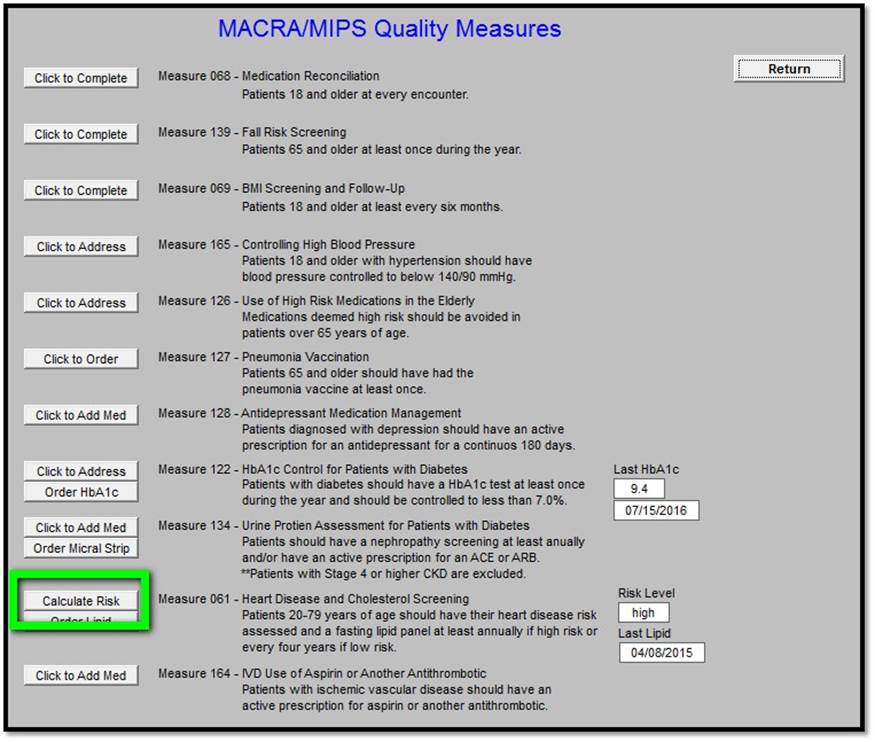
The Heart Risk can be done easily by using SETMA’s Framingham Heart Study Risk Calculators
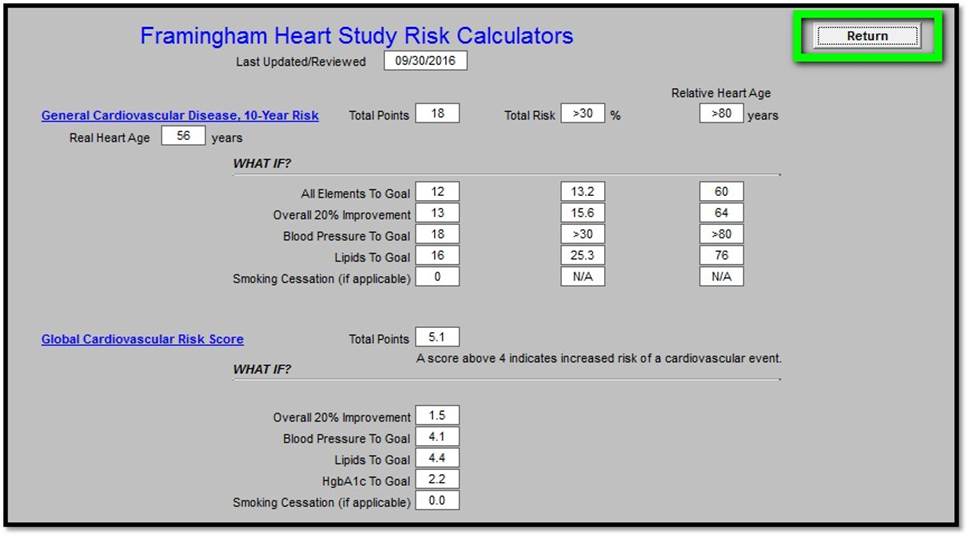
“Order Lipid” automatically creates a lab order for a Lipid Panel on the main lab template. No other steps are required other than sending the patient to the lab.

Patients with Ischemic Vascular Disease should be on aspirin or other anti-thrombotic.
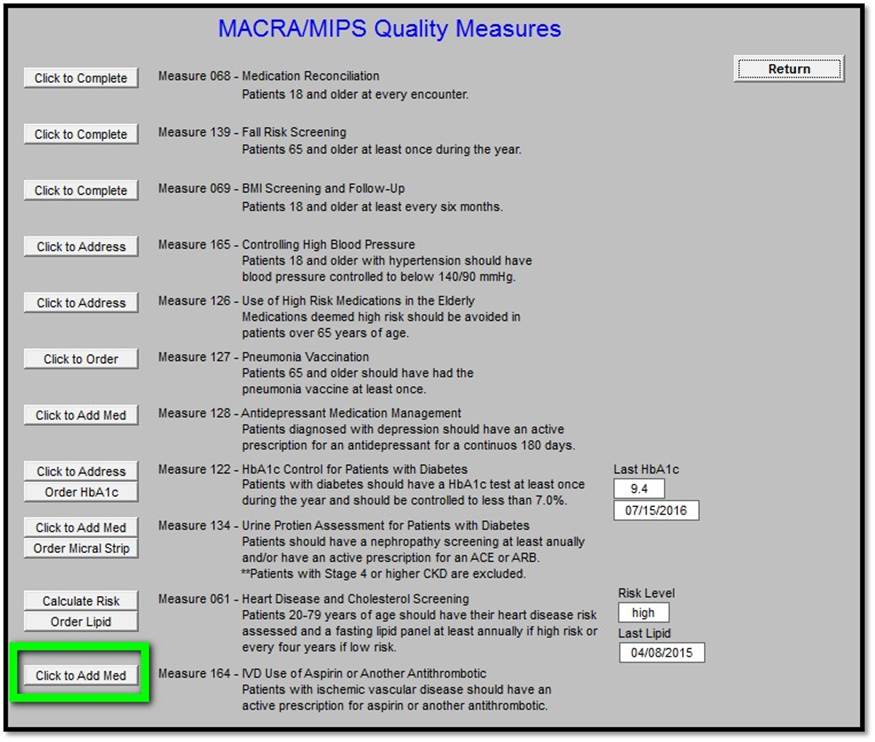
Automatically opens medication module to add or edit medications related to nephropathy. Click Close when done to return.

The Return button will take you back to either AAA Home, Master GP or the Plan, depending on which template you accessed it from.
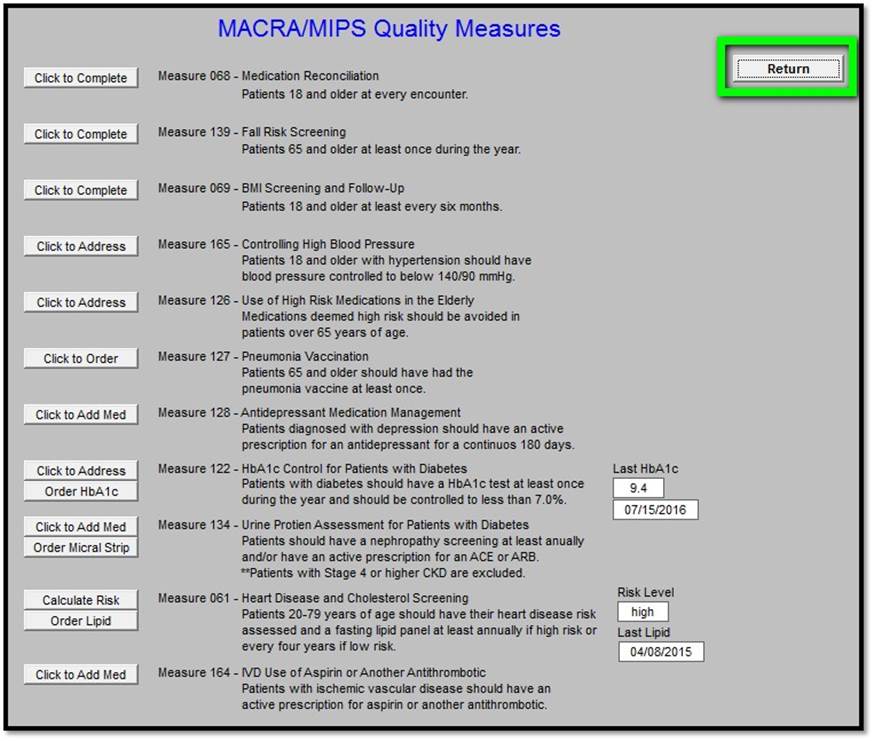
With color coding.
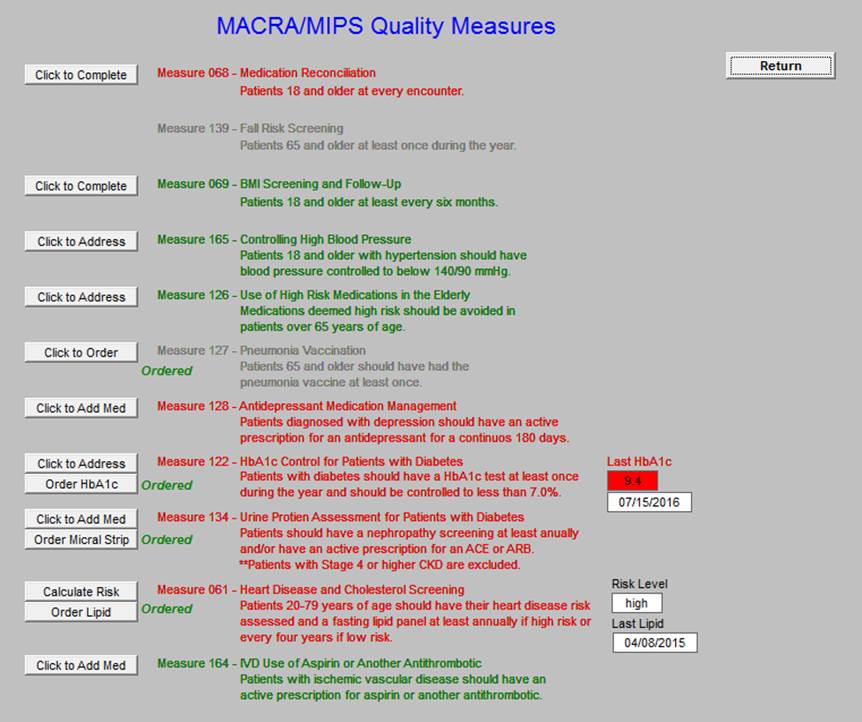
With our preparation and tools, MACRA and MIPS should just be another part of our continuous improvement plans and efforts.
|